- 111.(Python数模)(预测模型三)多元线性回归预测
- 2项目经理的核心能力_大型项目负责人的核心能力与素质
- 3【FPGA】xilinx Vivado UART IP核使用_fpga uartlite ip
- 4VMware vSphere 服务器虚拟化之二十二桌面虚拟化之创建View Composer链接克隆的虚拟桌面池...
- 5官宣!OpenTiny 前端 Web 应用开发挑战赛开赛啦~30万奖金等你拿!_【30万大奖】 opentiny 前端 web 应用开发挑战赛开始啦~
- 6Git操作 --忽略文件_git忽略文件
- 7语义相似度的计算方法_语义相似度计算
- 8k8s: NodeAffinity之优先调度策略和必须条件满足的调度策略
- 9MCU多组软件定时器的实现
- 10windows ubuntu子系统,肿瘤全外篇1.安装软件及建立数据库
基于Spring Boot的“鼻护灵”微信小程序
赞
踩
目录
前言
伴随着我国社会的发展,人民生活质量日益提高。于是对各种需求进行规范而严格是十分有必要的,所以许许多多的微信小程序应运而生。此时单靠人力应对这些事务就显得有些力不从心了。所以本论文将设计一套“鼻护灵”微信小程序,帮助医生进行挂号预约、在线咨询等繁琐又重复的工作,提高工作效率的同时,也减轻了管理者的压力。
本论文的主要内容包括:
第一,研究分析当下主流的Uni-weixin技术,结合医院日常管理方式,进行“鼻护灵”微信小程序的数据库设计,设计“鼻护灵”微信小程序功能,并对每个模块进行说明。
第二,陈列说明该微信小程序实现所采用的架构、系统搭建采用的服务器、系统开发环境和使用的工具,以及系统后台采用的数据库。
最后,对微信小程序进行全面测试,主要包括功能测试、查询性能测试、安全性能测试。分析微信小程序存在的不足以及将来改进的方向。
一、技术栈
末尾获取源码
Spring Boot+JS+ jQuery+Ajax...
二、系统功能介绍
注册界面,第一次使用本小程序的使用者,首先是要进行注册,点击“注册”,然后就会进入到注册的页面里面,将用户信息录入注册表,确认信息正确后,页面才会跳转到登录界面,用户登录成功后可使用本小程序所提供的所有功能,如图5-1所示。
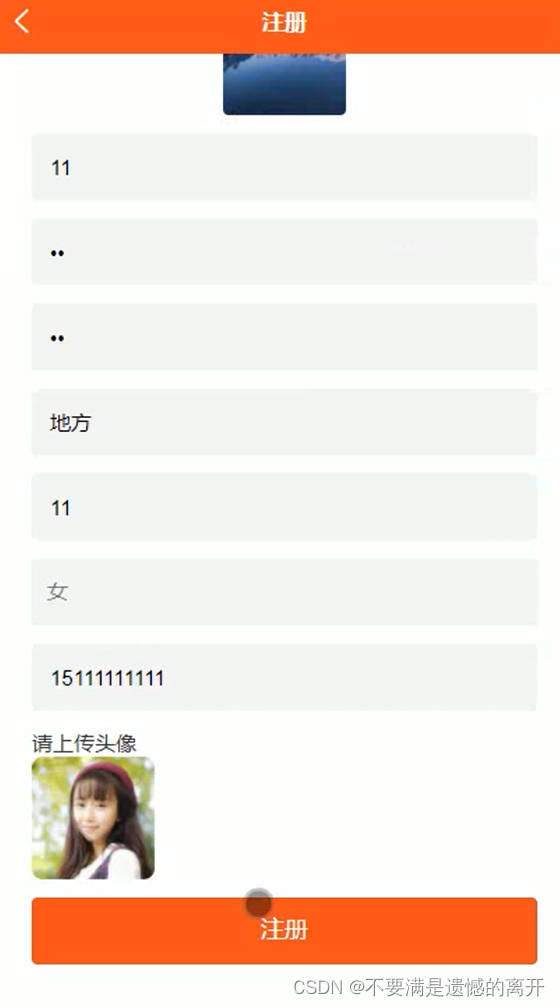
登录界面,首先双击打开微信小程序端系统,连上网络之后会显示出本系统的登录界面,这是进入小程序的第初始页面“登录”,能成功进入到该登录界面则代表小程序的开启是成功的,接下来就可以操作本系统所带有的其他所有的功能,如图5-2所示。
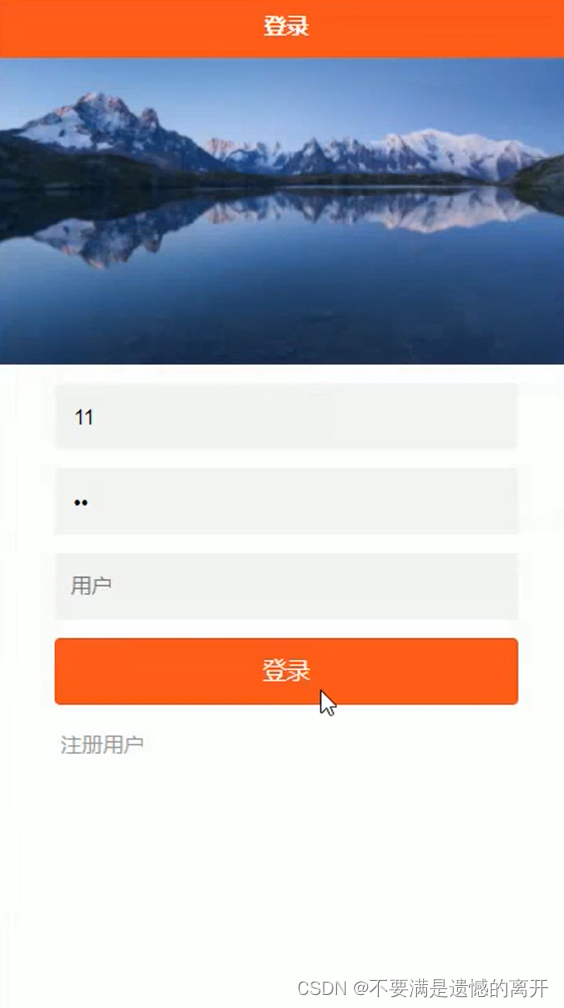
小程序首页是用户注册登录后进入的第一个界面,用户可通过小程序端首页进入对应的页面或者通过小程序最下面的那一行导航栏中的“首页、医生、公告信息、我的”,也可以点击“我的”进入我的页面,在我的页面可以对挂号预约、在线咨询、医生诊治、评价医生、我的收藏管理等进行详细操作,如图5-3所示。
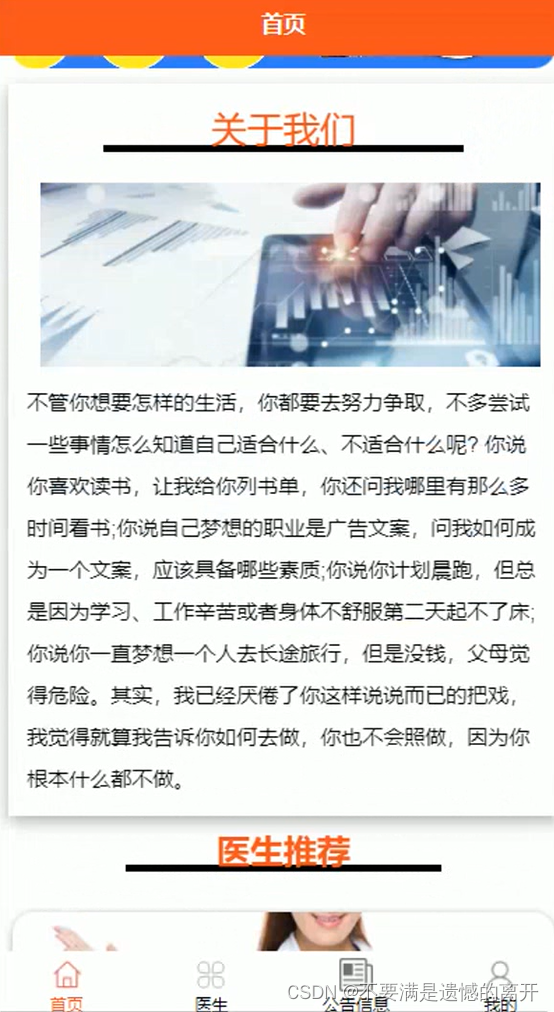
用户点击医生,在医生页面的搜索栏输入医生工号,进行查询,还可以查看医生工号、医生姓名、病症类型、性别、医龄、联系电话、头像、点击次数等,如有需要可进行挂号预约、在线咨询等操作如图5-4所示。

用户点击公告信息,在公告信息页面的搜索栏输入标题,进行查询,然后查看标题、简介、公告内容等详情信息,如图5-5所示。
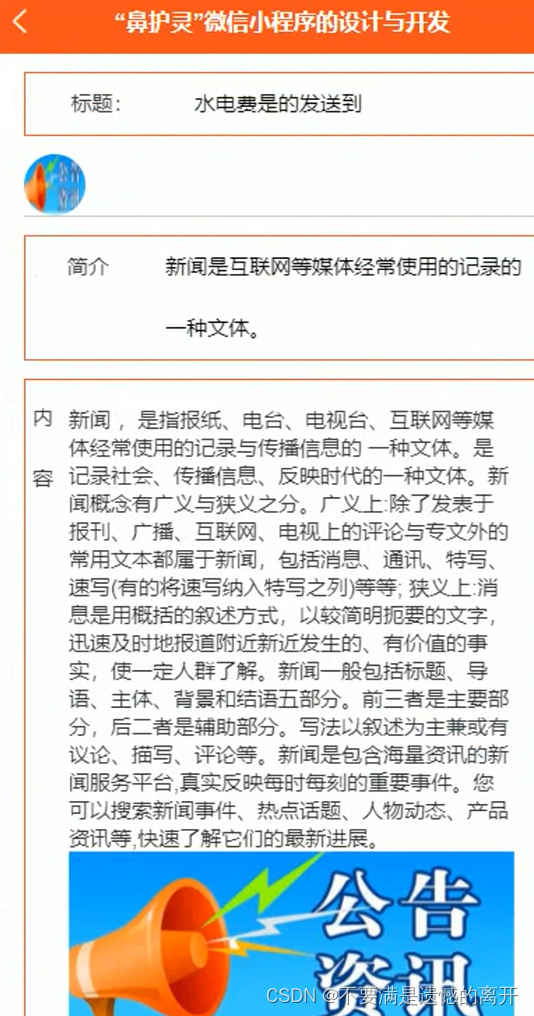
在我的功能界面,用户点击“我的”进入我的页面,在我的页面可以对挂号预约、在线咨询、医生诊治、评价医生、我的收藏管理等进行详细操作,如图5-6所示。
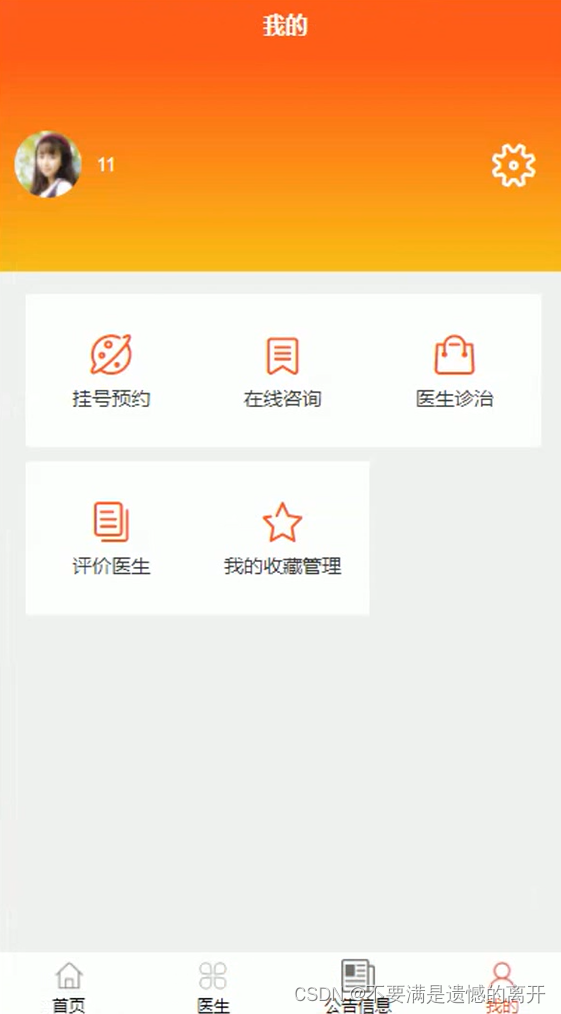
登录界面,首先双击打开微信小程序端系统,连上网络之后会显示出本系统的登录界面,这是进入小程序的第初始页面“登录”,能成功进入到该登录界面则代表小程序的开启是成功的,接下来就可以操作本系统所带有的其他所有的功能,如图5-7所示。

小程序首页是医生登录后进入的第一个界面,医生可通过小程序端首页进入对应的页面或者通过小程序最下面的那一行导航栏中的“首页、医生、公告信息、我的”,也可以点击“我的”进入我的页面,在我的页面可以对挂号预约、在线咨询、医生诊治、评价医生等进行详细操作,如图5-8所示。

医生点击挂号预约,在挂号预约页面的搜索栏输入医生工号,进行查询,还可以查看预约编号、预约日期、医生工号、医生姓名、账号、姓名、头像、审核回复、审核状态等,并可进行医生诊治、审核等操作如图5-9所示。
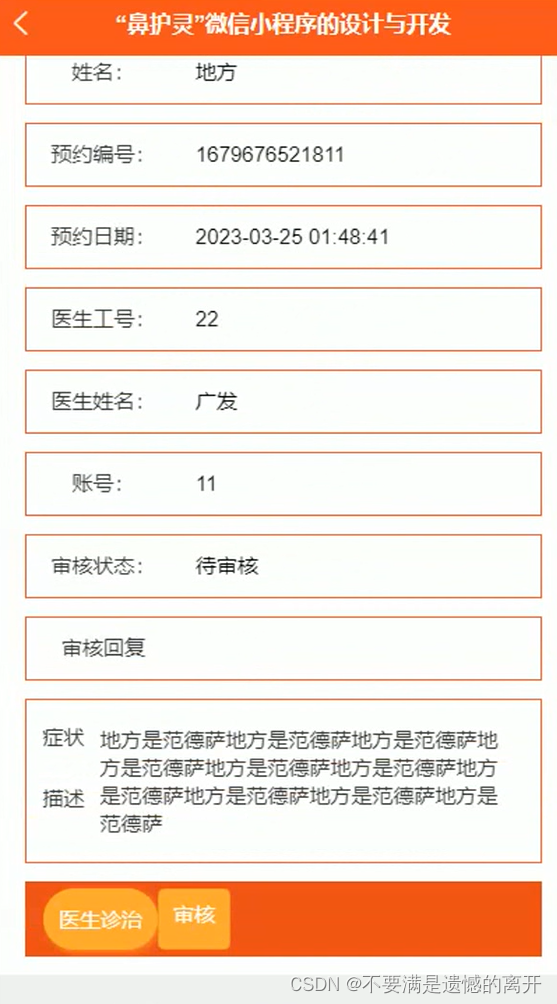
医生点击在线咨询,在在线咨询页面的搜索栏输入医生工号,进行查询,然后查看标题、咨询时间、医生工号、医生姓名、账号、姓名、头像、回复等详情信息,进行回复,如图5-10所示。
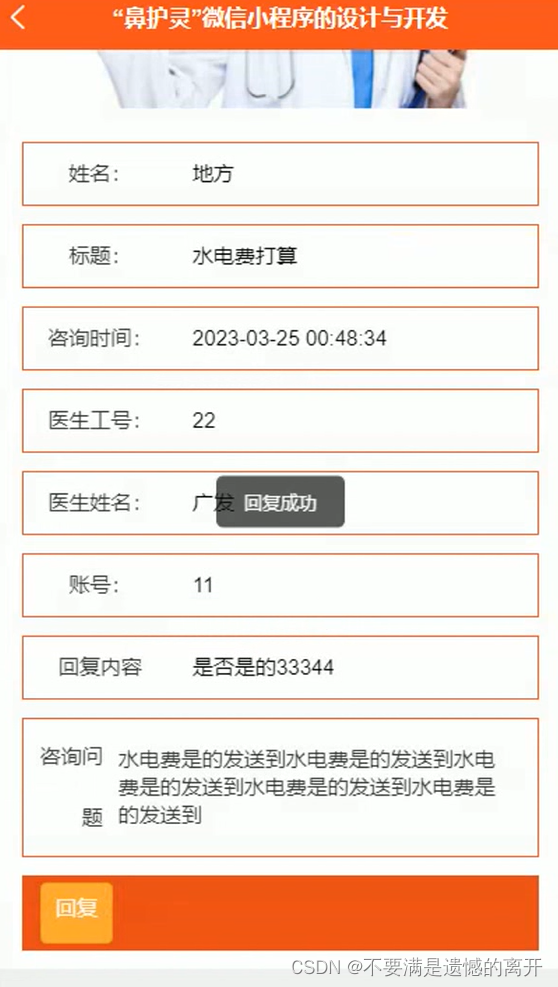
在我的功能界面,医生点击“我的”进入我的页面,在我的页面可以对挂号预约、在线咨询、医生诊治、评价医生等进行详细操作,如图5-11所示。
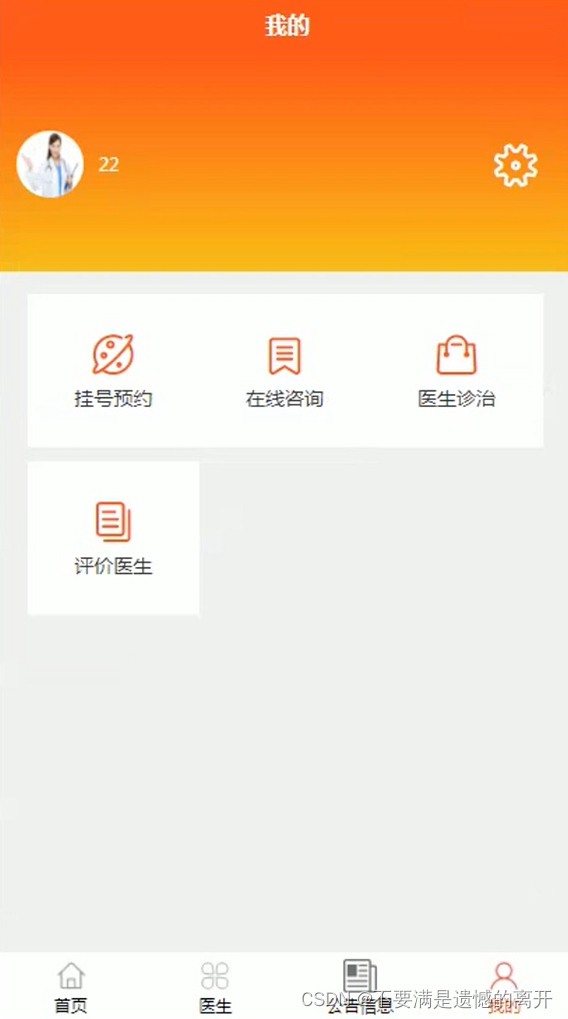
管理员进行登录,进入系统前在登录页面根据要求填写用户名和密码等信息,点击登录操作,如图5-12所示。
 管理员登录系统后,可以对系统管理、个人中心、用户管理、医生管理、病症类型管理、挂号预约管理、在线咨询管理、医生诊治管理、评价医生管理、系统管理等进行相应的操作管理,如图5-13所示。
管理员登录系统后,可以对系统管理、个人中心、用户管理、医生管理、病症类型管理、挂号预约管理、在线咨询管理、医生诊治管理、评价医生管理、系统管理等进行相应的操作管理,如图5-13所示。
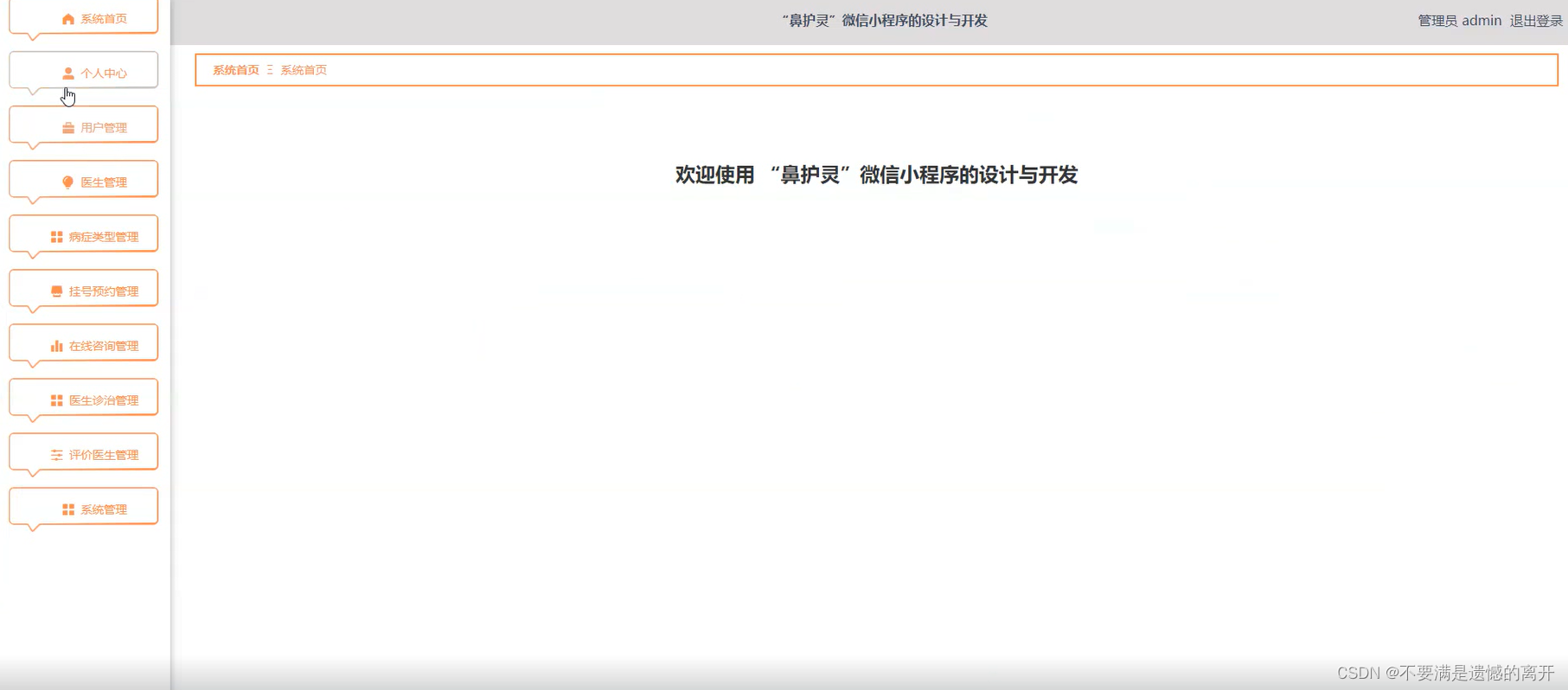 管理员点击用户管理,在用户管理页面输入账号、姓名、年龄、性别、手机、头像等信息,然后进行查询、新增或删除用户信息等操作,如图5-14所示。
管理员点击用户管理,在用户管理页面输入账号、姓名、年龄、性别、手机、头像等信息,然后进行查询、新增或删除用户信息等操作,如图5-14所示。

管理员点击医生管理,在医生管理页面输入医生工号、医生姓名、病症类型、性别、医龄、联系电话、头像、点击次数等信息,然后进行查询、新增或删除医生信息等操作,如图5-15所示。
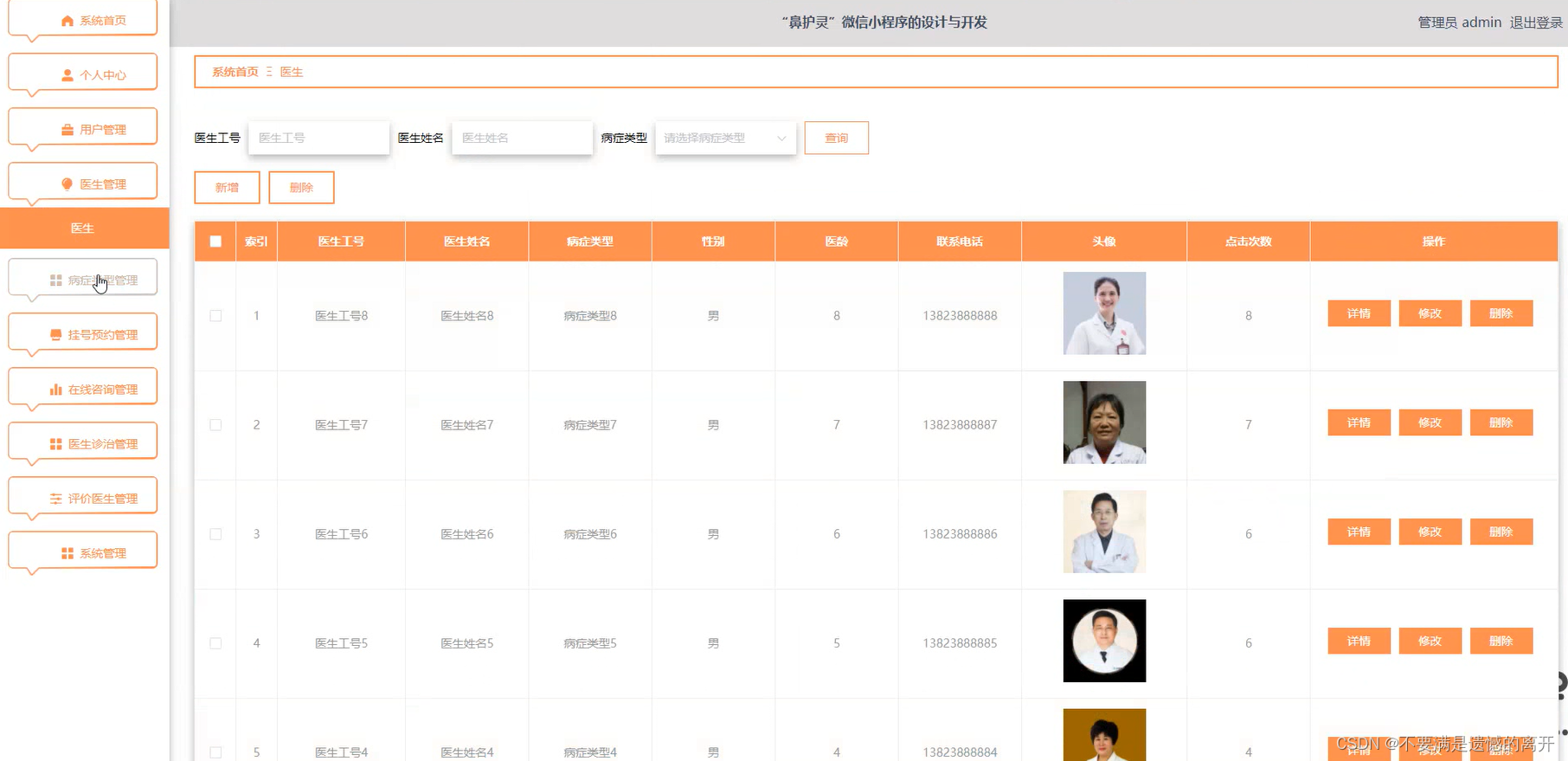 管理员点击病症类型管理,在病症类型管理页面输入病症类型等信息,然后进行查询、新增或删除病症类型等操作,如图5-16所示。
管理员点击病症类型管理,在病症类型管理页面输入病症类型等信息,然后进行查询、新增或删除病症类型等操作,如图5-16所示。
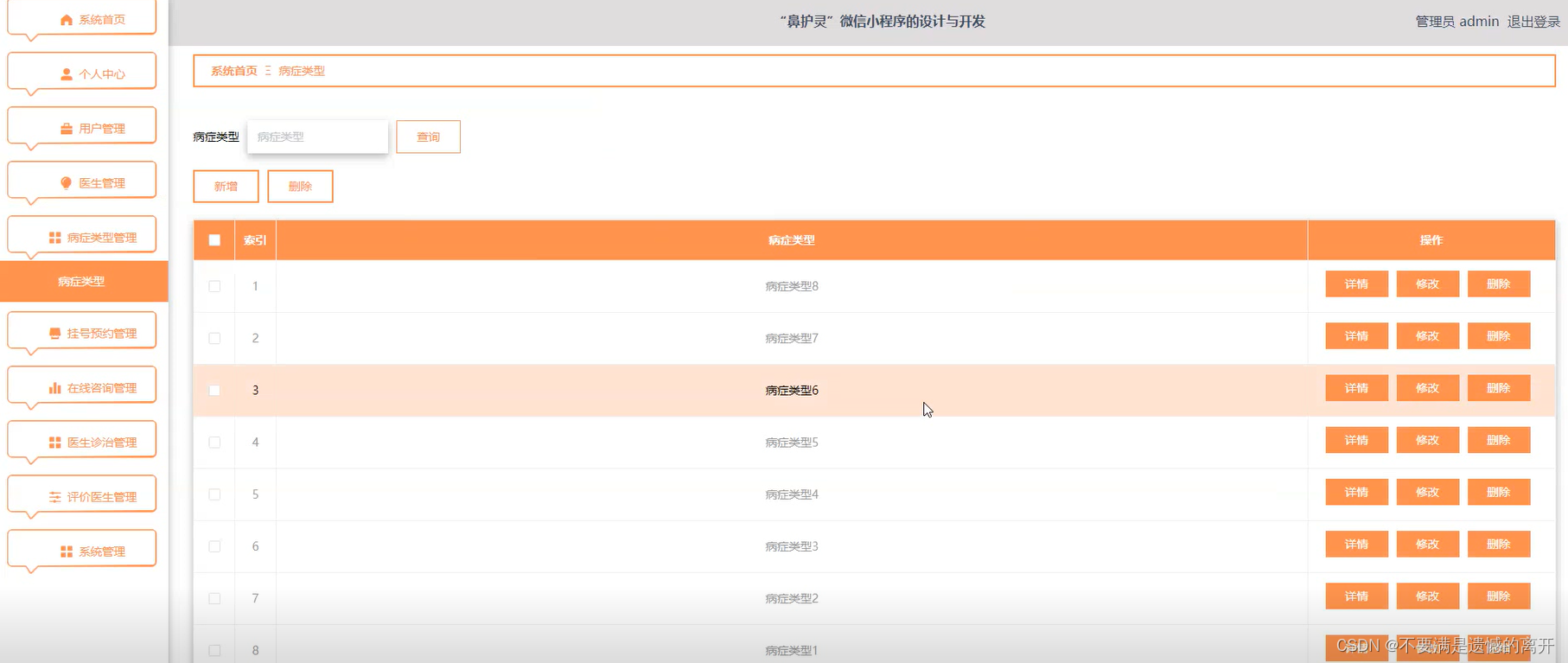
三、核心代码
1、登录模块
-
- package com.controller;
-
-
- import java.util.Arrays;
- import java.util.Calendar;
- import java.util.Date;
- import java.util.Map;
-
- import javax.servlet.http.HttpServletRequest;
-
- import org.springframework.beans.factory.annotation.Autowired;
- import org.springframework.stereotype.Controller;
- import org.springframework.web.bind.annotation.GetMapping;
- import org.springframework.web.bind.annotation.PathVariable;
- import org.springframework.web.bind.annotation.PostMapping;
- import org.springframework.web.bind.annotation.RequestBody;
- import org.springframework.web.bind.annotation.RequestMapping;
- import org.springframework.web.bind.annotation.RequestParam;
- import org.springframework.web.bind.annotation.ResponseBody;
- import org.springframework.web.bind.annotation.RestController;
-
- import com.annotation.IgnoreAuth;
- import com.baomidou.mybatisplus.mapper.EntityWrapper;
- import com.entity.TokenEntity;
- import com.entity.UserEntity;
- import com.service.TokenService;
- import com.service.UserService;
- import com.utils.CommonUtil;
- import com.utils.MD5Util;
- import com.utils.MPUtil;
- import com.utils.PageUtils;
- import com.utils.R;
- import com.utils.ValidatorUtils;
-
- /**
- * 登录相关
- */
- @RequestMapping("users")
- @RestController
- public class UserController{
-
- @Autowired
- private UserService userService;
-
- @Autowired
- private TokenService tokenService;
-
- /**
- * 登录
- */
- @IgnoreAuth
- @PostMapping(value = "/login")
- public R login(String username, String password, String captcha, HttpServletRequest request) {
- UserEntity user = userService.selectOne(new EntityWrapper<UserEntity>().eq("username", username));
- if(user==null || !user.getPassword().equals(password)) {
- return R.error("账号或密码不正确");
- }
- String token = tokenService.generateToken(user.getId(),username, "users", user.getRole());
- return R.ok().put("token", token);
- }
-
- /**
- * 注册
- */
- @IgnoreAuth
- @PostMapping(value = "/register")
- public R register(@RequestBody UserEntity user){
- // ValidatorUtils.validateEntity(user);
- if(userService.selectOne(new EntityWrapper<UserEntity>().eq("username", user.getUsername())) !=null) {
- return R.error("用户已存在");
- }
- userService.insert(user);
- return R.ok();
- }
-
- /**
- * 退出
- */
- @GetMapping(value = "logout")
- public R logout(HttpServletRequest request) {
- request.getSession().invalidate();
- return R.ok("退出成功");
- }
-
- /**
- * 密码重置
- */
- @IgnoreAuth
- @RequestMapping(value = "/resetPass")
- public R resetPass(String username, HttpServletRequest request){
- UserEntity user = userService.selectOne(new EntityWrapper<UserEntity>().eq("username", username));
- if(user==null) {
- return R.error("账号不存在");
- }
- user.setPassword("123456");
- userService.update(user,null);
- return R.ok("密码已重置为:123456");
- }
-
- /**
- * 列表
- */
- @RequestMapping("/page")
- public R page(@RequestParam Map<String, Object> params,UserEntity user){
- EntityWrapper<UserEntity> ew = new EntityWrapper<UserEntity>();
- PageUtils page = userService.queryPage(params, MPUtil.sort(MPUtil.between(MPUtil.allLike(ew, user), params), params));
- return R.ok().put("data", page);
- }
-
- /**
- * 列表
- */
- @RequestMapping("/list")
- public R list( UserEntity user){
- EntityWrapper<UserEntity> ew = new EntityWrapper<UserEntity>();
- ew.allEq(MPUtil.allEQMapPre( user, "user"));
- return R.ok().put("data", userService.selectListView(ew));
- }
-
- /**
- * 信息
- */
- @RequestMapping("/info/{id}")
- public R info(@PathVariable("id") String id){
- UserEntity user = userService.selectById(id);
- return R.ok().put("data", user);
- }
-
- /**
- * 获取用户的session用户信息
- */
- @RequestMapping("/session")
- public R getCurrUser(HttpServletRequest request){
- Long id = (Long)request.getSession().getAttribute("userId");
- UserEntity user = userService.selectById(id);
- return R.ok().put("data", user);
- }
-
- /**
- * 保存
- */
- @PostMapping("/save")
- public R save(@RequestBody UserEntity user){
- // ValidatorUtils.validateEntity(user);
- if(userService.selectOne(new EntityWrapper<UserEntity>().eq("username", user.getUsername())) !=null) {
- return R.error("用户已存在");
- }
- userService.insert(user);
- return R.ok();
- }
-
- /**
- * 修改
- */
- @RequestMapping("/update")
- public R update(@RequestBody UserEntity user){
- // ValidatorUtils.validateEntity(user);
- userService.updateById(user);//全部更新
- return R.ok();
- }
-
- /**
- * 删除
- */
- @RequestMapping("/delete")
- public R delete(@RequestBody Long[] ids){
- userService.deleteBatchIds(Arrays.asList(ids));
- return R.ok();
- }
- }

2、文件上传模块
- package com.controller;
-
- import java.io.File;
- import java.io.FileNotFoundException;
- import java.io.IOException;
- import java.util.Arrays;
- import java.util.Date;
- import java.util.HashMap;
- import java.util.List;
- import java.util.Map;
- import java.util.Random;
- import java.util.UUID;
-
- import org.apache.commons.io.FileUtils;
- import org.apache.commons.lang3.StringUtils;
- import org.springframework.beans.factory.annotation.Autowired;
- import org.springframework.http.HttpHeaders;
- import org.springframework.http.HttpStatus;
- import org.springframework.http.MediaType;
- import org.springframework.http.ResponseEntity;
- import org.springframework.util.ResourceUtils;
- import org.springframework.web.bind.annotation.PathVariable;
- import org.springframework.web.bind.annotation.RequestBody;
- import org.springframework.web.bind.annotation.RequestMapping;
- import org.springframework.web.bind.annotation.RequestParam;
- import org.springframework.web.bind.annotation.RestController;
- import org.springframework.web.multipart.MultipartFile;
-
- import com.annotation.IgnoreAuth;
- import com.baomidou.mybatisplus.mapper.EntityWrapper;
- import com.entity.ConfigEntity;
- import com.entity.EIException;
- import com.service.ConfigService;
- import com.utils.R;
-
- /**
- * 上传文件映射表
- */
- @RestController
- @RequestMapping("file")
- @SuppressWarnings({"unchecked","rawtypes"})
- public class FileController{
- @Autowired
- private ConfigService configService;
- /**
- * 上传文件
- */
- @RequestMapping("/upload")
- public R upload(@RequestParam("file") MultipartFile file,String type) throws Exception {
- if (file.isEmpty()) {
- throw new EIException("上传文件不能为空");
- }
- String fileExt = file.getOriginalFilename().substring(file.getOriginalFilename().lastIndexOf(".")+1);
- File path = new File(ResourceUtils.getURL("classpath:static").getPath());
- if(!path.exists()) {
- path = new File("");
- }
- File upload = new File(path.getAbsolutePath(),"/upload/");
- if(!upload.exists()) {
- upload.mkdirs();
- }
- String fileName = new Date().getTime()+"."+fileExt;
- File dest = new File(upload.getAbsolutePath()+"/"+fileName);
- file.transferTo(dest);
- FileUtils.copyFile(dest, new File("C:\\Users\\Desktop\\jiadian\\springbootl7own\\src\\main\\resources\\static\\upload"+"/"+fileName));
- if(StringUtils.isNotBlank(type) && type.equals("1")) {
- ConfigEntity configEntity = configService.selectOne(new EntityWrapper<ConfigEntity>().eq("name", "faceFile"));
- if(configEntity==null) {
- configEntity = new ConfigEntity();
- configEntity.setName("faceFile");
- configEntity.setValue(fileName);
- } else {
- configEntity.setValue(fileName);
- }
- configService.insertOrUpdate(configEntity);
- }
- return R.ok().put("file", fileName);
- }
-
- /**
- * 下载文件
- */
- @IgnoreAuth
- @RequestMapping("/download")
- public ResponseEntity<byte[]> download(@RequestParam String fileName) {
- try {
- File path = new File(ResourceUtils.getURL("classpath:static").getPath());
- if(!path.exists()) {
- path = new File("");
- }
- File upload = new File(path.getAbsolutePath(),"/upload/");
- if(!upload.exists()) {
- upload.mkdirs();
- }
- File file = new File(upload.getAbsolutePath()+"/"+fileName);
- if(file.exists()){
- /*if(!fileService.canRead(file, SessionManager.getSessionUser())){
- getResponse().sendError(403);
- }*/
- HttpHeaders headers = new HttpHeaders();
- headers.setContentType(MediaType.APPLICATION_OCTET_STREAM);
- headers.setContentDispositionFormData("attachment", fileName);
- return new ResponseEntity<byte[]>(FileUtils.readFileToByteArray(file),headers, HttpStatus.CREATED);
- }
- } catch (IOException e) {
- e.printStackTrace();
- }
- return new ResponseEntity<byte[]>(HttpStatus.INTERNAL_SERVER_ERROR);
- }
-
- }

3、代码封装
- package com.utils;
-
- import java.util.HashMap;
- import java.util.Map;
-
- /**
- * 返回数据
- */
- public class R extends HashMap<String, Object> {
- private static final long serialVersionUID = 1L;
-
- public R() {
- put("code", 0);
- }
-
- public static R error() {
- return error(500, "未知异常,请联系管理员");
- }
-
- public static R error(String msg) {
- return error(500, msg);
- }
-
- public static R error(int code, String msg) {
- R r = new R();
- r.put("code", code);
- r.put("msg", msg);
- return r;
- }
-
- public static R ok(String msg) {
- R r = new R();
- r.put("msg", msg);
- return r;
- }
-
- public static R ok(Map<String, Object> map) {
- R r = new R();
- r.putAll(map);
- return r;
- }
-
- public static R ok() {
- return new R();
- }
-
- public R put(String key, Object value) {
- super.put(key, value);
- return this;
- }
- }




